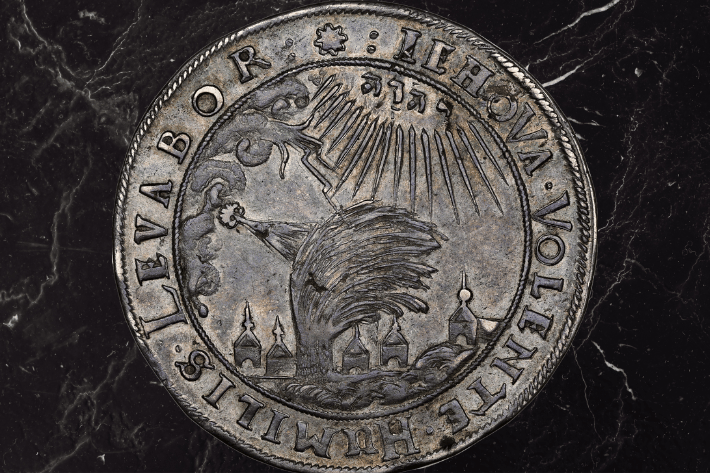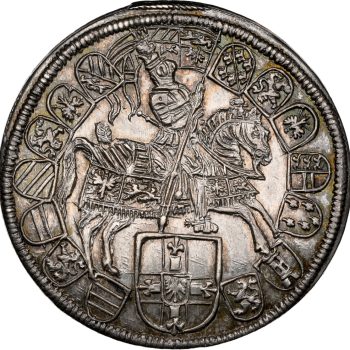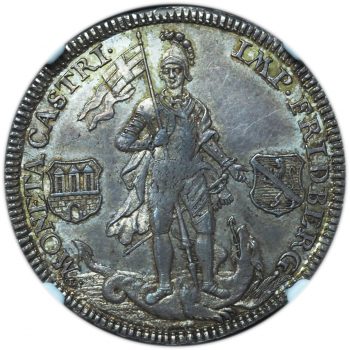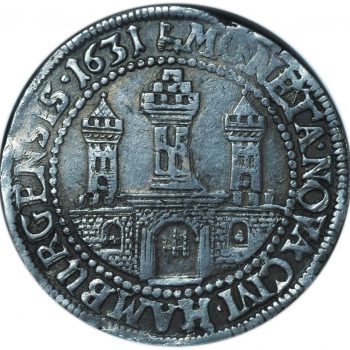German Thalers – History, Rarity, and Value

Before there was the dollar, there was the Thaler. This historic silver coin not only shaped trade across Europe but also gave rise to the word “dollar” itself. For coin collectors, German Thalers hold a unique allure: a blend of history, art, and tangible value. But what exactly makes these coins so desirable? And how much is a German Thaler worth today?
In this blog, we’ll explore the history of German Thalers, examine their current value, and answer the most common questions collectors ask about these fascinating coins.
Quick Facts About German Thalers
-
Origin: First minted in the early 16th century in the Holy Roman Empire.
-
Metal Content: Primarily silver, often containing nearly one ounce of silver.
-
Historical Significance: Predecessor to the modern dollar and a cornerstone of European trade.
-
Collectibility: Highly valued by coin collectors due to rarity, intricate designs, and historical importance.
-
Value Range: Common types may sell for $50–$300, while rare or historic Thalers can fetch thousands of dollars at auction.
What is a German Thaler Coin?
A German Thaler (also spelled Taler) is a large silver coin that originated in the early 1500s. The name comes from the Joachimsthaler, a silver coin minted in the town of Joachimsthal (in present-day Czech Republic). Over time, the term “Thaler” became a general name for similar large silver coins circulating throughout the Holy Roman Empire and German states.
These coins were known for their substantial size—often around 40 mm in diameter—and high silver content. They were widely used for trade and became the standard for many European currencies. In fact, the word “dollar” is derived from “Thaler,” showing the coin’s lasting influence on global currency systems.

Design Features:
German Thalers often depicted rulers, coats of arms, or religious symbols. Their intricate designs and inscriptions reflect the artistic and political history of the time. Some of the most famous varieties include the Maria Theresa Thaler, which remained in circulation for centuries.
A Brief History of German Thalers
The Thaler’s history spans several centuries and reflects the economic and political shifts of Europe:
The Birth of the Thaler (Early 1500s)
The first Joachimsthaler was minted in 1518 and quickly gained popularity due to its reliable silver content and standardized weight. It was widely accepted across trade routes in Central Europe.
Expansion Across German States
Throughout the 16th and 17th centuries, various German states and cities began minting their own Thalers, often featuring local rulers or city crests. These coins became a vital part of commerce within the Holy Roman Empire.

The Maria Theresa Thaler (1741)
One of the most famous Thalers is the Maria Theresa Thaler, first minted in Austria but widely circulated in German-speaking regions. Even after Maria Theresa’s death, these coins continued to be struck with the same 1780 date, becoming a popular trade coin throughout Europe, the Middle East, and Africa.
The Decline of the Thaler
By the late 19th century, Germany transitioned to the gold mark following unification in 1871. However, Thalers remain treasured relics of this era, valued for their silver content and historical significance.
How Much is a Thaler Worth Today?
The value of a German Thaler can vary greatly depending on its condition, rarity, and historical significance.
Factors Influencing Value
-
Rarity: Limited mintage or special historical issues command higher prices.
-
Condition: Coins in uncirculated or mint condition (graded MS60 and above) are far more valuable.
-
Silver Content: Most Thalers contain nearly an ounce of silver, so their value also tracks silver spot prices.
-
Historical Appeal: Coins from significant periods or with unique designs (e.g., commemorative issues) are especially sought after.
Price Range
-
Common German Thalers: $50–$300 depending on condition.
-
Rare or High-Grade Coins: $1,000–$5,000 or more.
-
Famous Examples: Exceptional Thalers, such as rare city issues or early 16th-century coins, have been known to sell for over $10,000 at major auctions.
Are Old German Coins Worth Anything?
Absolutely! Old German coins, especially Thalers, often carry significant collector value beyond their metal content.
-
Collectible vs. Bullion Value: While the silver in a Thaler has intrinsic value, its historical significance and rarity can far exceed the melt value.
-
Other German Coins: Coins like pfennigs, marks, and commemorative silver coins from the 19th century also hold collectible value, though Thalers remain the most sought after.
-
Grading & Authentication: Professional coin grading by services like NGC or PCGS ensures authenticity and can greatly increase a coin’s market value.
Collecting German Thalers
German Thalers are a must-have for both beginner and experienced numismatists. Here’s what to consider if you’re looking to start a collection:
Tips for Collectors
-
Start with Common Types: Maria Theresa Thalers are relatively affordable and an excellent entry point.
-
Learn About Varieties: Each German state had its own designs, so learning the differences can be both educational and rewarding.
-
Check for Authenticity: Due to their value, Thalers are sometimes counterfeited. Always buy from trusted dealers or have coins authenticated by experts.

Where to Buy or Sell
Reputable coin shops like Arnold Jewelers are the best places to buy or sell authentic Thalers. Online marketplaces can also be an option, but require extra caution and proper research.
Conclusion
German Thalers are more than just coins—they are pieces of history that tell the story of trade, currency evolution, and artistry from centuries past. Whether you’re a seasoned collector or new to numismatics, these coins offer both historical insight and tangible value.
If you have a German Thaler and are wondering about its value, or if you’d like to start your own collection, Arnold Jewelers is here to help. We also buy and evaluate rare coins, including German Thalers, with expert knowledge and trusted service.
Looking to add to your collection?
- Categories:
